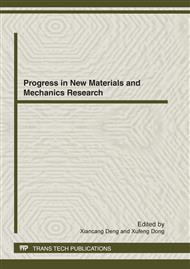p.154
p.159
p.164
p.169
p.174
p.179
p.184
p.189
p.193
Effects of Feed Water Conditions on Performance of Electrodeionization Process for Removal of Ni2+ from Dilute Solution
Abstract:
Electrodeionization (EDI) is being applied more and more to treat wastewater containing heavy metal ions, especially for electroplating rinsing wastewater. The effects of feed water conditions including concentration, pH and temperature on the performance of EDI process for removal of Ni2+ from dilute synthetic wastewater were investigated systematically in this paper. It was found that the dilute resistivity of the EDI module descended from 1.5-2.8MΩ•cm to 0.36-0.45MΩ•cm while the influent Ni2+ concentration increased from 45 mg•L-1 to 63mg•L-1. Existence of some H+ in feed water would push the stack current up. An increase in temperature of feed water would facilitate the ion exchange and diffusion and thus promote mass transfer. It was indicated that feed water conditions had a significant effect on separation performance of EDI process for treating dilute solutions containing heavy metal ions. Pure water production could be accomplished and water reuse could be realized via EDI technology by appropriately restricting feed water conditions.
Info:
Periodical:
Pages:
174-178
Citation:
Online since:
April 2012
Authors:
Price:
Сopyright:
© 2012 Trans Tech Publications Ltd. All Rights Reserved
Share:
Citation:


